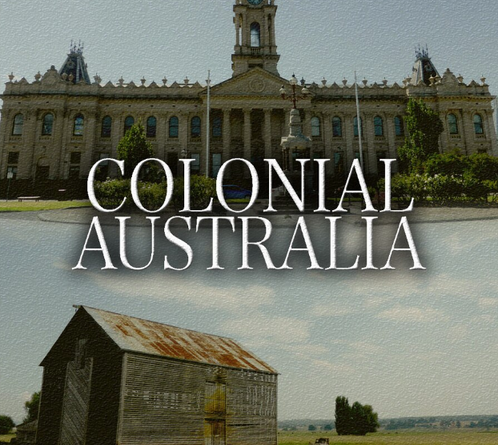
Colonial Relics of the Raj

Throughout the former territories of the British Raj grand buildings and monuments remain testament to a once great Empire. Melbourne, in Australia, was in many ways the ultimate Victorian city. It was built on the back of the gold rush in the newly named state of Victoria in the mid 19th Century at the height of Empire.
This was a time when the English felt they were a master race and their aim in cities like Melbourne was to create societies that reflected in their entirety the values and even appearance of England.
Here after all, in the centre of Melbourne still standing today, is an elaborate monument to General Gordon, the famous General who lost and ultimately sacrificed himself in the Battle of Khartoum in the far away Sudan in 1888, defending the British Empire against the rampaging Moslem armies of the Mahdi.
The iconic Flinders Street railway station in its distinct yellow was supposed to have been built in Bombay. Elsewhere architectural influences from other parts of the Empire are evident.
Melbourne has preserved and still celebrates its Victorian heritage. In old inner city areas like South Melbourne, street facades of entire blocks remain unchanged and in suburbs like Albert Park, named after Prince Albert, of course, homes display the beautiful Victorian ironwork, common in the period.
In Sydney the architecture takes on a more functional and less glamorous tone.
The founding of Sydney as a colony for convicts pre-dated Melbourne by 50 years and some of its surviving buildings like the Hyde Park convict barracks are from this period and were built by the convicts.The church opposite is even the work of a convict architect. Nearby the later buildings of Government like the Department of Lands Building celebrate the Age of Exploration. Statues of famous British explorers like Joseph Banks and Matthew Flinders who helped open up the country are built into the facade.
British dignitaries in the colonies, such as the Governor, often sited their official homes in the best locations. Here in Sydney the still-functioning Government House, built in 1834, was located in the centre of the city on its highest hill overlooking the splendid Harbour.

[Back side of Government House, Sydney, by Stephanie on Flickr creative commons tinyurl.com/qz9wxls]Much of early Sydney was built under the leadership of its most successful Governor Lachlan Macquarie. A huge influence, he also built roads including one of the first to Bennelong Point where his wife would come and admire the view at a spot now known as Lady Macquarie’s Chair. Not surprisingly, it’s a magnet for tourists given its exceptional location and picturesque aspect.
This beautiful parkland in the centre of Sydney is surrounded by the Botanic Gardens, originally a laboratory for plant specimens collected and interchanged within the colonies by British plant hunters. The British were foremost interested in trade and commerce, and plants and their products were often the key to new-found wealth.
In many of Britain’s former Australian colonies such as in the capital of Queensland, Brisbane, grand colonial buildings are still in use or else , like the former Governor’s mansion here, turned into museums.
There is sometimes a tendency in Australia to ignore or turn away from a colonial past. Here the gates of the grand old Parliament building lie locked, the building empty.
One country where colonial heritage seems highly valued is Singapore. Independent only since 1963, this modern city state may be racing into the 21st Century, but civic authorities have embarked on ambitious rehabilitation projects of old colonial buildings.
Clifford Pier was where dignitaries would arrive onshore and the old wooden structure, perfectly preserved, is now the site of a five star hotel. Inside the terminal is an exclusive but seemingly empty restaurant.
Across the road the old colonial post office is also now the Fullerton Hotel. Situated on the Singapore River, the post office was in the heart of the city. Occupied by the Japanese in the second World War, venue for pro-independence protests after it, it’s now been beautifully renovated and has become the place to be seen.

Singapore may now be a destination of choice for hundreds of thousands of Chinese tourists, many headed for the futuristic gambling resort at Marina Bay, but they still enjoy the trappings of Britishness – High Tea is still served after 3pm in hotels across the city.
Occupying the very heart of the old colonial district is the still-functioning Singapore Cricket Club. Everywhere here, there are reminders of a colonial past. Singapore was founded by Sir Stamford Raffles on behalf of the British East India Company. It’s not surprising that the island colony played such a key role in the development and growth of Empire
The Singapore Botanic Gardens were central to the ambitions of British plant hunters and traders. This was a virtual laboratory for the commercialisation of plants such as pineapples from South America and cacao from Africa which were introduced by the British into their Asian colonies. It was here that British botanist Rubber Ridley, successfully tapped rubber plants taken from Brazil. By 1920 half the world’s rubber was supplied and run by British growers just across the water from here in Malaysia.
Now the past may be taking a back seat as Singapore hurtles into the future, but Singaporeans never stop building, and one of the next projects is sure be the old Singapore Railway Station. Now abandoned, it was where the Eastern and Oriental Express, and in fact all trains, left from as they began their journey up into the Malaysian peninsula and beyond.
There’s little doubt this key site from the past will soon have a new life and place in Singapore’s heritage story.
Credits
Presenter/voice/producer: Ian Cross
Photography: Robin Constable
